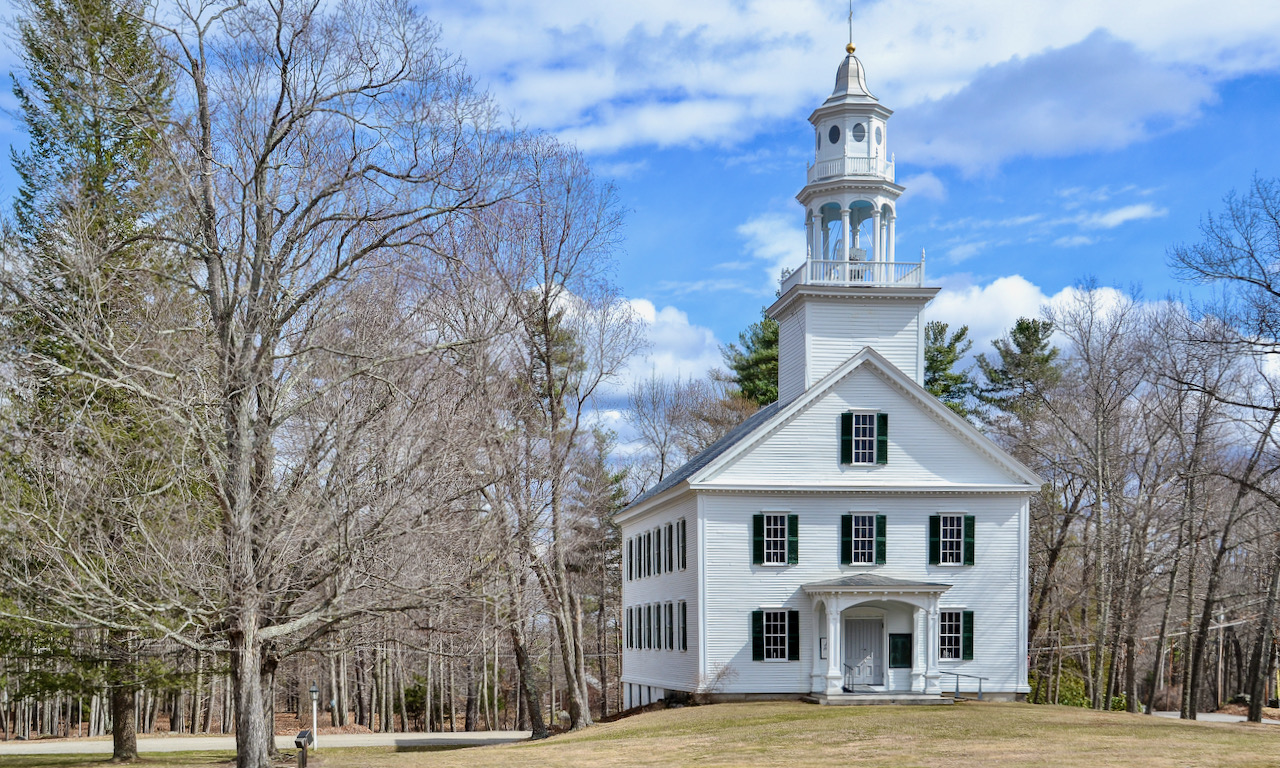Begun in 1771, the Shirley Meeting House occupies a prominent site in historic Shirley Center. Originally sited on land that adjoined the western boundary of the town’s militia training field, the Meeting House was constructed to accommodate the growing population of the newly formed town. The first service was held in the structure on November 25, 1773, the annual day of Thanksgiving.
To commemorate the building of the new Meeting House an elegant folio bible was presented to the parish by Lydia Hancock, aunt to patriot John Hancock, and Lydia Bowes, wife of Phinehas Whitney, the first permanent minister to settle in Shirley who would remain in his position for 53 years. The Bible has been used for every service throughout the history of the First Parish.
The cost of the completed structure was £168.10 shillings, and its original framework remains as the core of the today’s building. The first enlargement of the Meeting House occurred in 1804 when three “porches” were constructed at the entrances, with the east and west ends large enough to relocate stairs to the gallery and allow additional pews to be sold and allow access to the tower and belfry.
In 1839 a major alteration to the interior of the Meeting House was completed by local craftsman, Wilder Dodge and the women of the parish established a lending library with 600 volumes for dues-paying members, along with an additional 1,000 books for a juvenile library. Both collections continue to be housed in the Meeting House.
On July 18, 1851, the town voted to move the Meeting House 100 yards east onto the training field in line with the Town Hall. Work began in the summer of 1852 and the first service at the new location was held in October. At the time it was extensively remodeled by extending the gable-end, main facade to support the 1804 Federal belfry that had been constructed over an open profiling entrance portico. On the interior, the illusion of elaborate stucco profiling of interior walls and ceiling was created by the trompe d’oeil wallpaper.
Upon the dissolution of the Unitarian congregation at the First Parish in 1944, a group of Shirley residents concerned for the preservation of the Town’s oldest public building formed an informal society to maintain and preserve the Meeting House. The First Parish Meeting House Preservation Society of Shirley, Inc., was incorporated in 1995 as a 501(c)3 charitable organization, to preserve the Meeting House and continue its use as a venue for concerts and other community activities.

